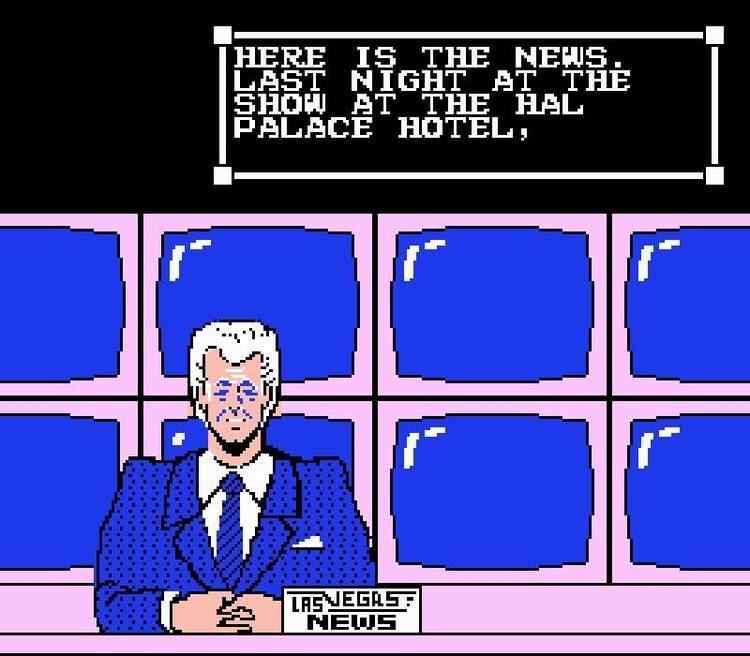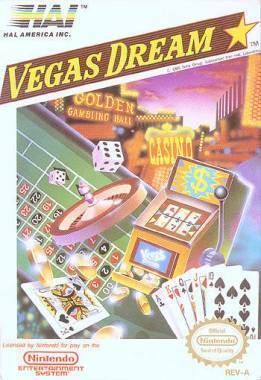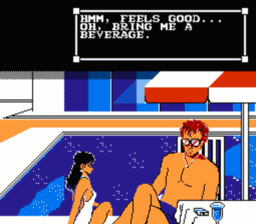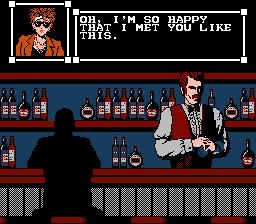10 /10 1 Votes10
Programmer(s) Naoki Gotoh Initial release date 30 September 1988 | 5/5 Emuparadise Composer(s) Kuni Kawachi | |||||||||||||||||||||||||||||||||
 | ||||||||||||||||||||||||||||||||||
Director(s) Ryotaro HasegawaYukio Nagasaki Similar HAL Laboratory games, Casino games, Other games | ||||||||||||||||||||||||||||||||||
Vegas dream nes playthrough nintendocomplete
Vegas Dream, released in Japan as Viva! Las Vegas (ビバ ラスベガス) is a gambling video game produced for the Nintendo Entertainment System and developed by HAL Laboratory that was released in 1988.
Contents
- Vegas dream nes playthrough nintendocomplete
- Vegas dreams finished
- Overview
- Sequel
- Music
- Endings
- Reception
- References

Vegas dreams finished
Overview

Vegas Dream begins with graphics showing one of the players arriving at Las Vegas by airplane. Featuring a backdrop of old downtown Las Vegas (with signs featuring thinly veiled references to the Pioneer Club ("Pionee" Club in the game), Binion's Horseshoe and Glitter Gulch, players then choose which to play of the two versions of the game: "Vegas Dream" (storyline version) or "One Spot" (strictly gaming, no storyline).

Players then start with a bankroll of $700 at the fictional HAL Palace Hotel, to spend on four games: Keno, blackjack, roulette or slot machines. Between rounds of play at the normal casino games, there are randomly occurring social interactions with various characters, such as business people, other patrons, or casino employees (in the "Vegas Dream" version of the game only). These interactions (and the players' responses to them) have different possible results: sometimes the unidentified man is a pickpocket; other times he's just down on his luck and will reward the player for his/her kindness down the road. For whatever reason, the results of interactions are reported on a local Las Vegas news station by a white older male; music with a cheery tone plays for positive happenings, such as the player receiving cash, with more somber music playing for thefts, injuries, etc.

Vegas Dream also allows the player to date and marry as many members of the opposite sex as you care to; men married a woman named Ms. Sophie while women married a gentleman named Mr. James. However, the marriage(s) don't affect the player's status (apart from the increased cash flow, or perchance the person they married is crooked, a loss of funds from theft).

There is a password save feature built into the game. However, the passwords are twenty-six characters long and consist of letters, numbers and symbols making them difficult to record correctly. The Japanese version, with gameplay identical to the North American version, uses slightly stronger language in its script and even mentions cigarettes. The text within the Japanese version is also entirely in English.
Sequel
In 1993, a sequel, Vegas Stakes, was released for the Super Nintendo Entertainment System.
Music

At this time, Kazuo Sawa was writing music to some of Hal Laboratory's video games such as Tokoro-san no Mamoru mo Semeru mo. Instead, Hal hired professional keyboardist Kuni Kawachi to compose the game's soundtrack while Sawa worked on sound design and provided the sound driver. Vegas Dream is Kuni Kawachi's only video game to date.
Endings
It is possible to win the game by earning over ten million dollars, at which point the player is seen reclining by a pool with his household staff (assuming the player has moved into a mansion and has hired servants), and then taking a limousine to a show with their partner.
Should the opposite happen - and the player(s) lose all his/her money - the staff at the HAL Palace give the player one final pull on a slot machine in a last-ditch effort to win some more money. If the player wins, they get to resume their gaming; if not, the player is bid goodbye, and a screen appears showing persons heading towards a plane, ready to depart Las Vegas, ending the game.
Reception
Allgame gave Vegas Dream an overall score of 3 stars out of a possible 5. Vegas Dream was among the first Nintendo games marketed to adults in the U.S.
